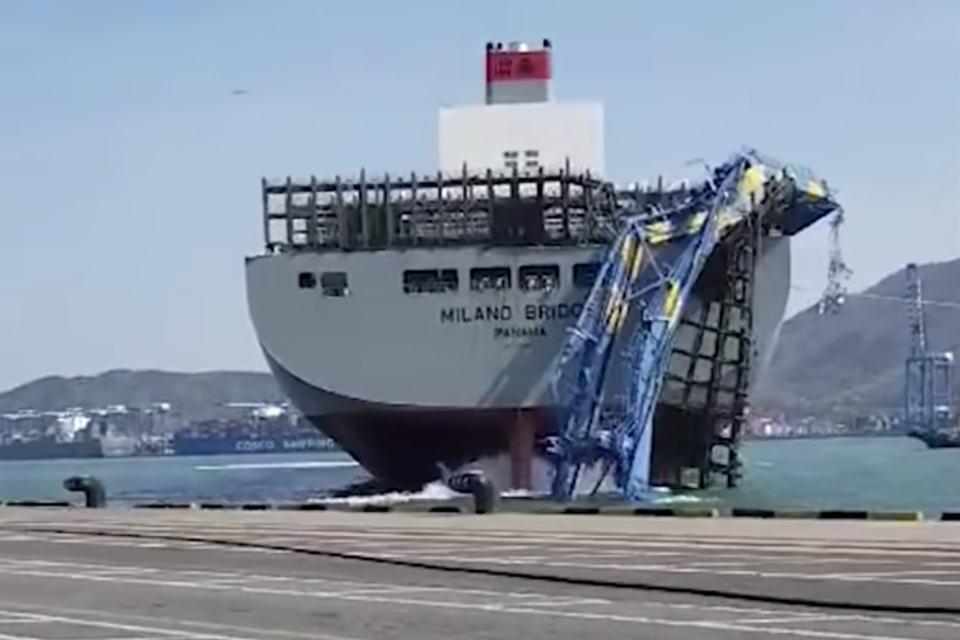The South Korean authorities have traced the cause of the accident in which a container ship of the Japanese shipping company ONE sailed into a crane in the port of Busan at the beginning of April. During the collision, a terminal crane collapsed and partly ended up on the ship.
The Korean Maritime Safety Tribunal of the Ministry of Oceans and Fisheries has found that the 13,870-TEU Milano Bridge was sailing too fast and that a propeller was partly above the surface of the water. This made the ship more difficult to manoeuvre and caused the incident.
Insufficient ballast water
According to the researchers, the ship entered the port with approximately one third of the propeller above the water surface, because there was insufficient ballast water on board. The carrier also did not carry any cargo because it was on its way to a Chinese shipyard for repairs. In addition, the Milano Bridge approached pier 2 at a speed of eight knots, which is higher than the usual speed of six knots when mooring.
It then first ran into another container ship, the Seaspan Ganges, after which the Milano Bridge collided with one of the three cranes of container terminal Busan New Port. Due to the enormous blow the crane collapsed.
Substantial damage
On the basis of available data, statements from crew members and images of the accident, the investigators attempted to simulate the circumstances as they were at the time of the collision. This revealed, among other things, that when the propeller is fully submerged, the ship is easier to steer, which considerably reduces the probability of an incident.
Calculations made by the investigation team also showed that the accident could have been prevented at a speed of less than seven knots.
ONE’s ship sustained considerable damage and is currently being repaired at a shipyard in Dalian, China.
This article first appeared in Dutch on Nieuwsblad Transport, which is also published by SWZ|Maritime’s publishing partner Promedia.








